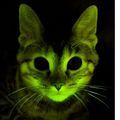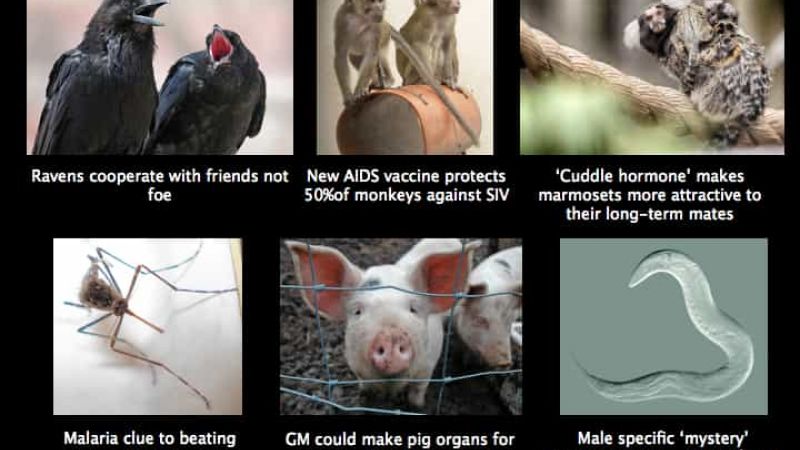Text to go here...
 Scientists inserted two genes into cats: the first is taken from macaque monkeys and helps the cat resist the feline form of Aids; the second is a fluorescent gene from jellyfish that helps the researchers literally see where the added anti-aids gene is active.
Scientists inserted two genes into cats: the first is taken from macaque monkeys and helps the cat resist the feline form of Aids; the second is a fluorescent gene from jellyfish that helps the researchers literally see where the added anti-aids gene is active.
The jellyfish gene produces a fluorescent protein that glows green under UV light. Scientists used a harmless virus to deliver the green fluorescent protein (GFP) and monkey genes into the eggs of cats. The fertilized egg then develops into a cat, passing the genes on to every cell in the cat's body. UV light can then be used to make the protein fluoresce, lighting up cells containing the genes. The technology has been used in animals ranging from fruit flies to pigs and has proved to be a valuable tool for geneticists.
Cats are rarely used in research but because feline immunodeficiency virus (FIV)is very similar to HIV and infects over 2.5% of cats worldwide, they have been used in research into HIV. Scientists can now use the GFP technology to track specific genes in developing cats or follow the path of infection by the FIV virus.
The pioneers GFP technology won the Nobel Prize for their contribution to biological and medical research in 2008.
Last edited: 11 January 2022 14:52




